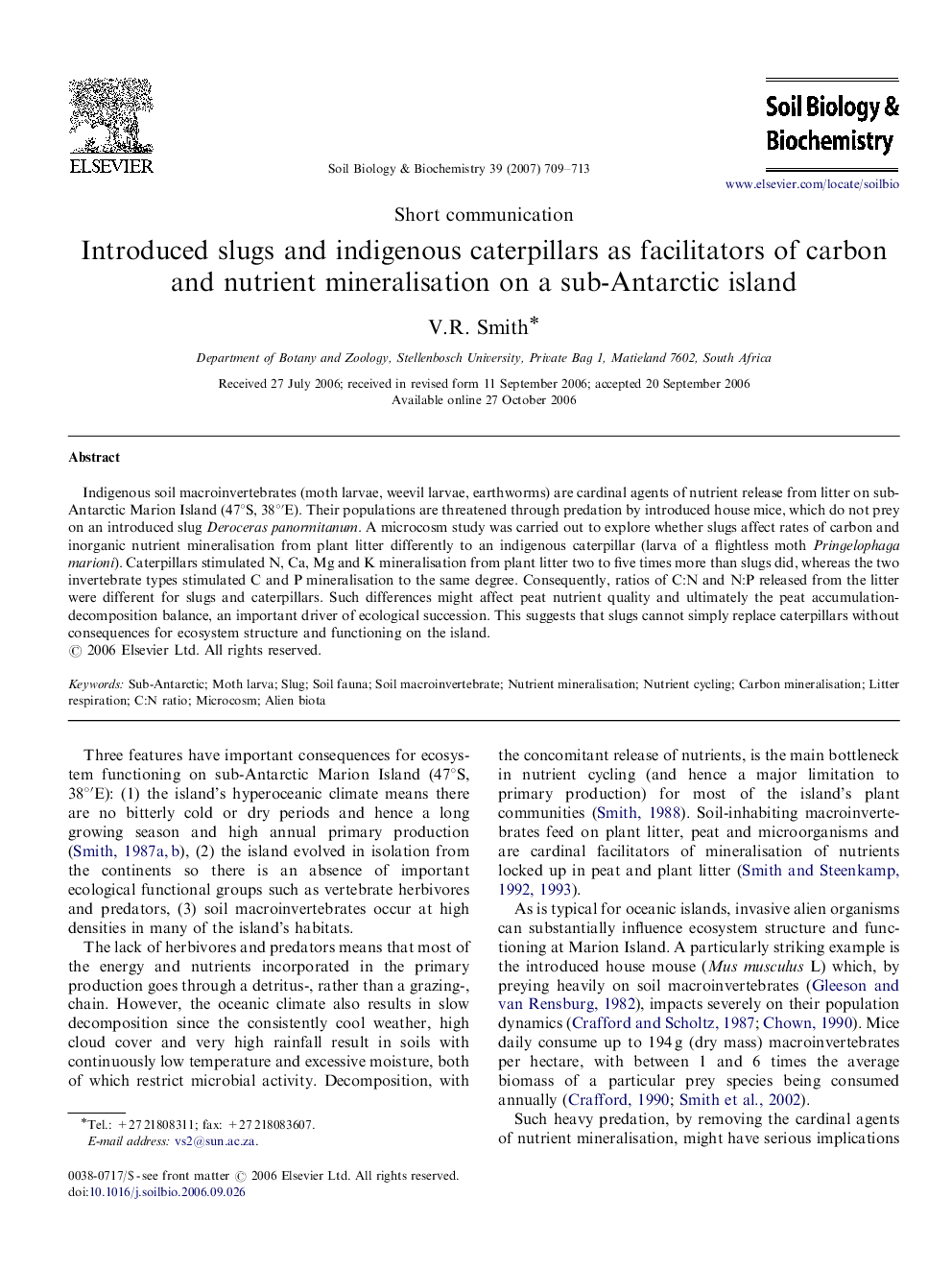| Article ID | Journal | Published Year | Pages | File Type |
|---|---|---|---|---|
| 2026494 | Soil Biology and Biochemistry | 2007 | 5 Pages |
Indigenous soil macroinvertebrates (moth larvae, weevil larvae, earthworms) are cardinal agents of nutrient release from litter on sub-Antarctic Marion Island (47°S, 38°′E). Their populations are threatened through predation by introduced house mice, which do not prey on an introduced slug Deroceras panormitanum. A microcosm study was carried out to explore whether slugs affect rates of carbon and inorganic nutrient mineralisation from plant litter differently to an indigenous caterpillar (larva of a flightless moth Pringelophaga marioni). Caterpillars stimulated N, Ca, Mg and K mineralisation from plant litter two to five times more than slugs did, whereas the two invertebrate types stimulated C and P mineralisation to the same degree. Consequently, ratios of C:N and N:P released from the litter were different for slugs and caterpillars. Such differences might affect peat nutrient quality and ultimately the peat accumulation-decomposition balance, an important driver of ecological succession. This suggests that slugs cannot simply replace caterpillars without consequences for ecosystem structure and functioning on the island.
